Start learning Python – Installation, Compilation, Running Script
What is python used for?
Python is a high-level programming language, Created by Guido van Rossum and first released in 1991. Learn from basics to scripts, installation, applications, testing and more from this content. This content is aimed at delivering a knowledge about python, its uses installation and run.
The top five uses of python are mentioned below:
I. Software development- for build control, testing and management of codes Python helps developers in developing new software’s using Scions, Buildbot and Apache Gump, Roundup or Trac.
II. Business application- Python, being one of the high-level language has helped develop many E-commerce and ERP systems. Dropbox, Spotify and google has used Python in their application development.
III. Web development- Python’s standard library supports frameworks and protocols like HTML, XML, JSON, E-mail processing, FTP, IMAP, and other Internet protocols., which in turn helps in the web development. Django and Flask are the two famous web development frameworks of python.
IV. Desktop GUI- plenty of packages are available in Python to design the Desktop GUI, depending upon the need, the required package is chosen. Some of the popular packages are PyQt, PySide, WxPython, Kivy.
V. Machine learning- using scikit-learn and TensorFlow from Python library some of the major machine learning algorithms are build.
How to run python script?
Under different OS platforms different steps are followed to run python script, for the top three OS platforms follow the below steps:
Windows
- Open Command line: Start menu -> Run and type cmd
- Type: C:python27python.exe
- Note: This is the default path for Python 2.7. If you are using a computer where Python is not installed in this path, change the path accordingly.
Mac OS X
- Open Command line: Finder -> Go menu -> Applications -> Terminal
- Type: python
Linux
- Open a command prompt (e.g. xterm)
- Type: python
How to compile python script?
There are different ways to compile a python script some of them are:
1. Using CX_Freeze
2. Using PyInstaller
Others techniques involve using commands like
1. python "hello.py" and
2. python -m py compile fileA.py fileB.py fileC.py
But before using the technique a., try to make your script executable by adding #!/usr/bin/env python to the top of the script and the file executable by using the command chmod +x hello.py.
How to install python?
Step 1)
To install Python visit the official website of Python http://www.python.org/downloads/ and choose your RESPECTIVE version in convenience with your computer configuration. For example Python version 3.6.3. 64 bit/32 bit.
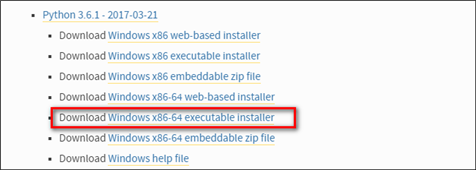
Step 2)
Once the download gets completed, run the exe file to install Python. Now click on the Install Now button.
Step 3)
Once the installation process begins, it will ask for the destination, to where it should be installed, choose the location and the installation process takes a few minutes to get completed
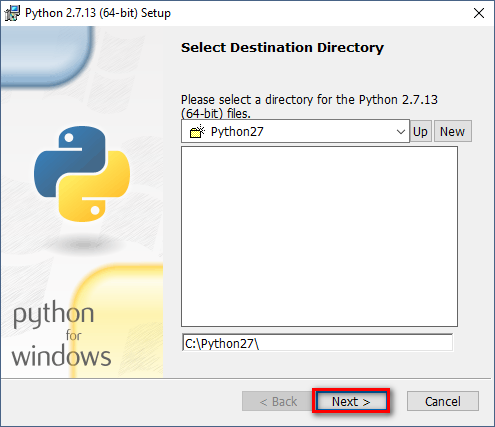
Step 4)
Once the installation is completed, the setup will get successful, then close the setup. Now you are all set to use python.
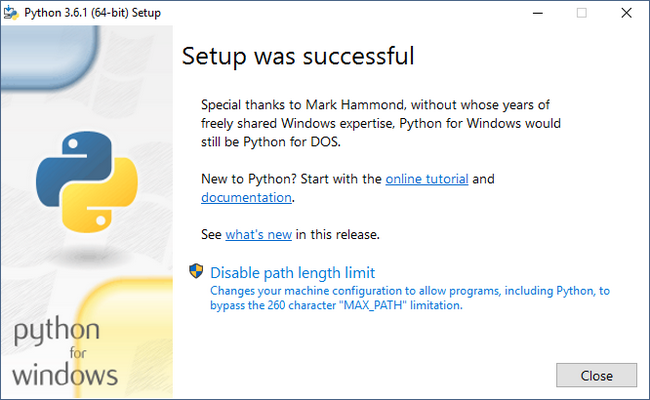
If you want to install the next version of Python, you can go ahead and run the setup file.
In the pop-up screen. Select the add python 3.6 to path to add the next version.
Next a dialog box appears with “Disable path length limit” option which removes the limitation on the MAX_PATH variable. Select or unselect it according to your requirement.
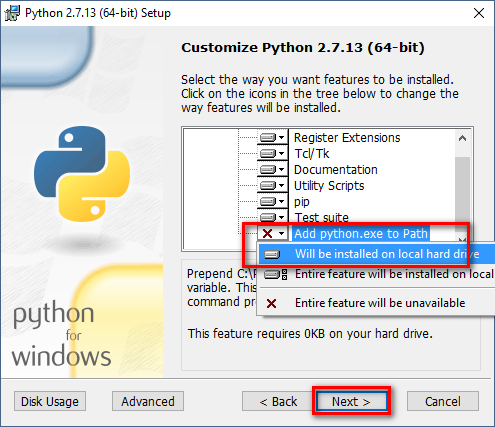
How to install python 2?
Follow the following steps to install python 2 in your windows:
Step 1:
Visit www.python.org/downloads and click on ‘Download Python 2.714”.
Step 2:
Now run the downloaded file and select the destination
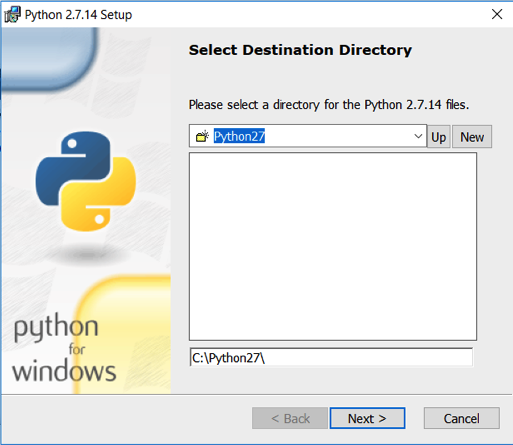
Step 3:
The installation will begin in a few seconds, once it gets completed, click finish
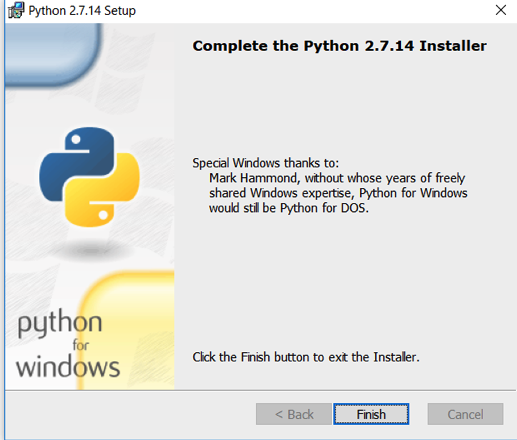
How to install python 3?
To install the python 3 on your windows, the following steps needs to be executed:
Step 1:
- Choose the right version you want to be downloaded in the download section of python website.
- Select either the Windows x86-64 executable installer or Windows x86 executable installer. (The download file is around 25MB.)
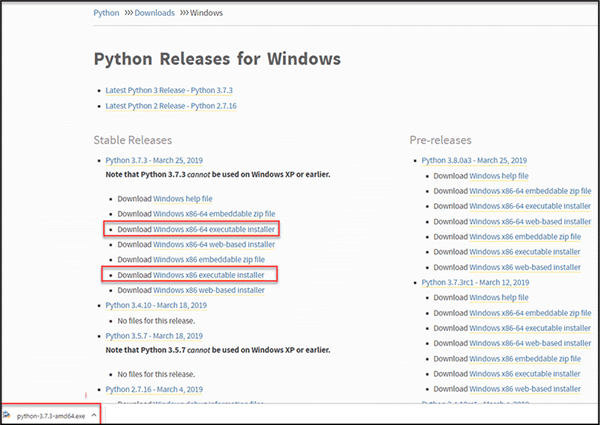
Step 2:
Once the file gets downloaded, run the Python Installer
Select the Install launcher for all users and add Python 3.7 to PATH checkboxes.
Step 3:
Select install now
Step 4:
In the next dialog box select whether to disable path length limit. It will enable Python to use long path names.
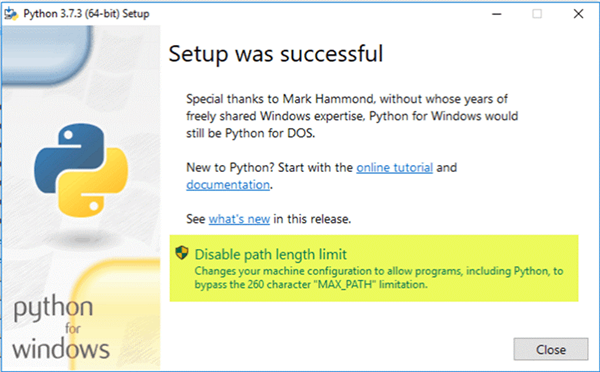
Step 5:
Navigate C:UsersUsernameAppDataLocalProgramsPythonPython37 since we have installed the latest version.
Double-click python.exe.
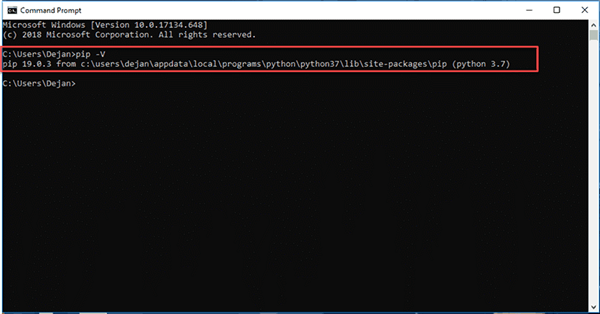
(Or)
Type python –V in the Command Prompt. The output should display your installed version of Python that you have installed.
Step 6:
In the command prompt type pip -V in the console. If Pip was installed successfully, you will see the following outputnow you are all set to use the python 3 in your windows.
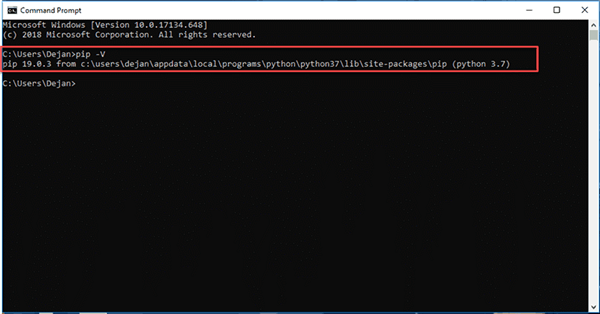
How run python in Linux?
Usually Linux machines will have Python 2.5 installed in it, all you got to do is to
- Start the file with a shebang and use
#!/usr/bin/python
- From there make it executable with
$ chmod +x filename.py
- Then you can run it with the command:
$./filename.py
Note: it works only for single files.
Now you can easily run python in Linux.
Find a course provider to learn Python
Java training | J2EE training | J2EE Jboss training | Apache JMeter trainingTake the next step towards your professional goals in Python
Don't hesitate to talk with our course advisor right now
Receive a call
Contact NowMake a call
+1-732-338-7323Take our FREE Skill Assessment Test to discover your strengths and earn a certificate upon completion.
Enroll for the next batch
Python Programming Hands-on Training with Job Placement
- Dec 17 2025
- Online
Python Programming Hands-on Training with Job Placement
- Dec 18 2025
- Online
Python Programming Hands-on Training with Job Placement
- Dec 19 2025
- Online
Related blogs on Python to learn more
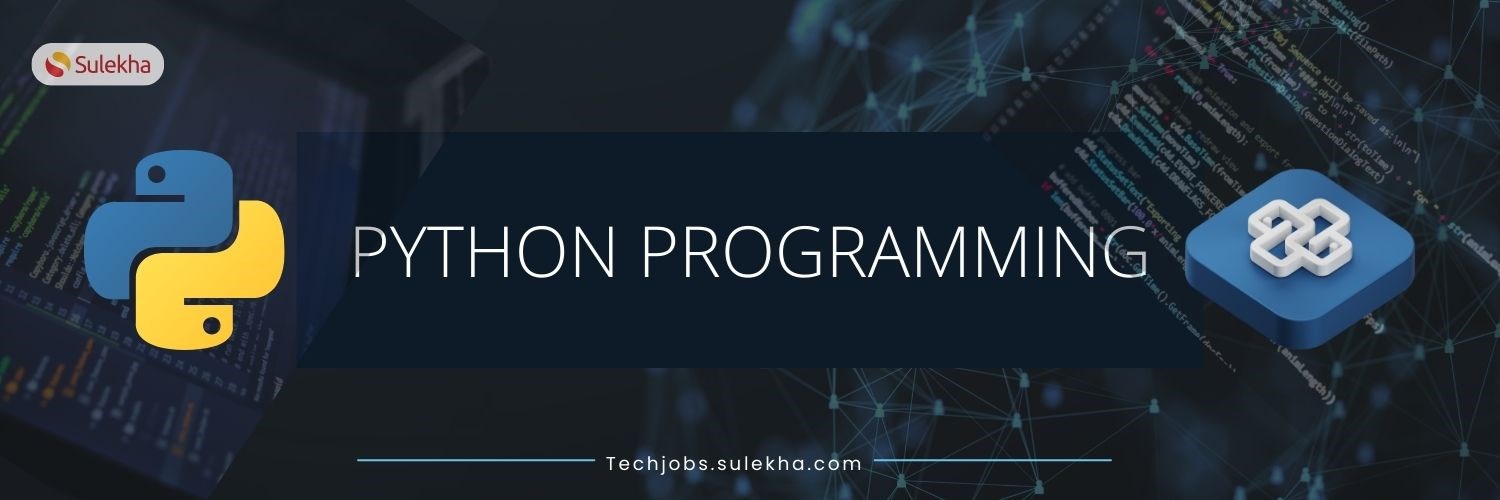
PYTHON PROGRAMMING
Discover Python, a versatile programming language ideal for web development, data analysis, and machine learning. Learn its easy syntax and extensive libraries to unlock a world of career opportunities in tech.

Python: The Language of Innovation and Versatility
"Master Python with Sulekha Tech Courses and boost your tech career. Find expert-led training in the USA and Canada for roles like Data Scientist and Machine Learning Engineer, and start your journey to innovation today."
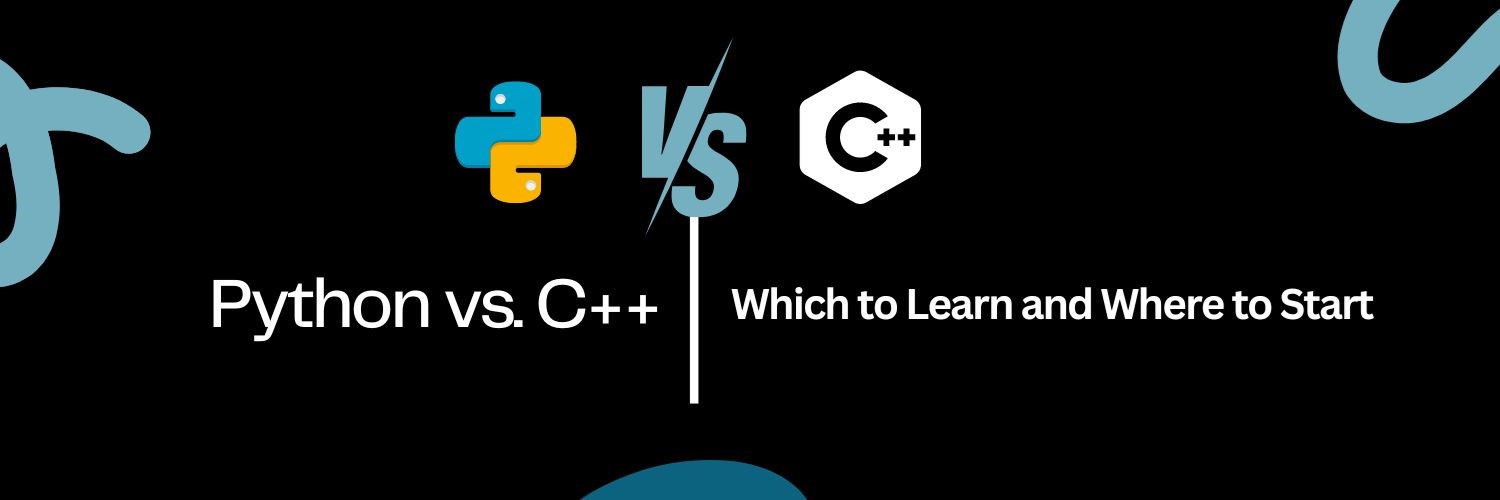
Python vs. C++: Which to Learn and Where to Start
Compare Python and C++ programming languages, learn which language is best for your needs and where to start your programming journey, with tips on getting started and resources for further learning.

Top 8 DevOps Programming Languages That You Must Know
Top 8 DevOps programming languages that every DevOps engineer should know. From Python to PHP, learn the essential skills for automating and streamlining software delivery."

How did I successfully complete Python course?
Embark on a journey of student’s success story in Python programming, uncovering stories of resilience, growth, and achievement. Be inspired by their transformative experiences, unwavering dedication, and remarkable successes in mastering Python and

What are the top 10 Python Applications in the Real World?
Discover the top 10 Python applications transforming the real world across web development, audio and video Applications, business applications data science, game development, and more.

Ruby vs. Python: Pros, Cons, and Where to Start
Ruby vs. Python: Pros, Cons, and Where to Start Learning a programming language is helpful as it opens up numerous career prospects in the ever-growing technology field. Whether it is software development, web development, data science, or artificia
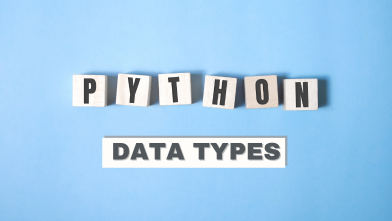
Data Types in Python for Data Science Applications
Python is a multipurpose programming language that finds applications across various domains. Its simplicity and flexibility make it a popular choice for web development, where frameworks like Django and Flask enable the creation of dynamic websites.
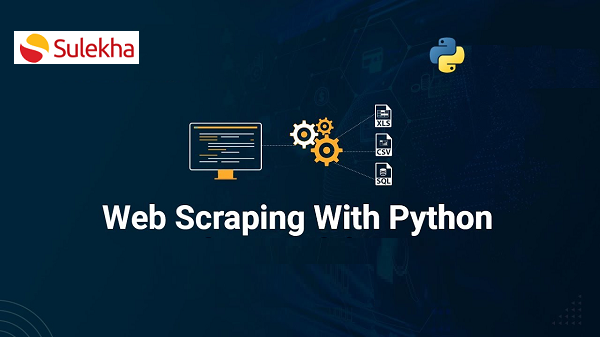
How to Build a Data Web Scraper Tool with Python
Web scraping involves processes to extract data from websites. This process is often performed using software that can simulate a user's actions on a website.
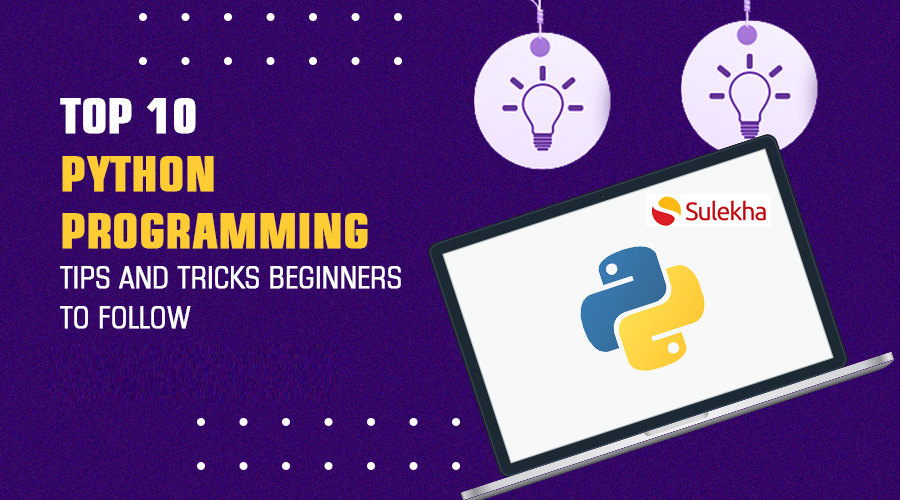
10 Python Tips and Tricks for Efficient Coding
Introduction
Latest blogs on technology to explore

From Student to AI Pro: What Does Prompt Engineering Entail and How Do You Start?
Explore the growing field of prompt engineering, a vital skill for AI enthusiasts. Learn how to craft optimized prompts for tools like ChatGPT and Gemini, and discover the career opportunities and skills needed to succeed in this fast-evolving indust

How Security Classification Guides Strengthen Data Protection in Modern Cybersecurity
A Security Classification Guide (SCG) defines data protection standards, ensuring sensitive information is handled securely across all levels. By outlining confidentiality, access controls, and declassification procedures, SCGs strengthen cybersecuri

Artificial Intelligence – A Growing Field of Study for Modern Learners
Artificial Intelligence is becoming a top study choice due to high job demand and future scope. This blog explains key subjects, career opportunities, and a simple AI study roadmap to help beginners start learning and build a strong career in the AI

Java in 2026: Why This ‘Old’ Language Is Still Your Golden Ticket to a Tech Career (And Where to Learn It!
Think Java is old news? Think again! 90% of Fortune 500 companies (yes, including Google, Amazon, and Netflix) run on Java (Oracle, 2025). From Android apps to banking systems, Java is the backbone of tech—and Sulekha IT Services is your fast track t

From Student to AI Pro: What Does Prompt Engineering Entail and How Do You Start?
Learn what prompt engineering is, why it matters, and how students and professionals can start mastering AI tools like ChatGPT, Gemini, and Copilot.

Cyber Security in 2025: The Golden Ticket to a Future-Proof Career
Cyber security jobs are growing 35% faster than any other tech field (U.S. Bureau of Labor Statistics, 2024)—and the average salary is $100,000+ per year! In a world where data breaches cost businesses $4.45 million on average (IBM, 2024), cyber secu

SAP SD in 2025: Your Ticket to a High-Flying IT Career
In the fast-paced world of IT and enterprise software, SAP SD (Sales and Distribution) is the secret sauce that keeps businesses running smoothly. Whether it’s managing customer orders, pricing, shipping, or billing, SAP SD is the backbone of sales o

SAP FICO in 2025: Salary, Jobs & How to Get Certified
AP FICO professionals earn $90,000–$130,000/year in the USA and Canada—and demand is skyrocketing! If you’re eyeing a future-proof IT career, SAP FICO (Financial Accounting & Controlling) is your golden ticket. But where do you start? Sulekha IT Serv

Train Like an AI Engineer: The Smartest Career Move You’ll Make This Year!
Why AI Engineering Is the Hottest Skillset Right Now From self-driving cars to chatbots that sound eerily human, Artificial Intelligence is no longer science fiction — it’s the backbone of modern tech. And guess what? Companies across the USA and Can

Confidence Intervals & Hypothesis Tests: The Data Science Path to Generalization
Learn how confidence intervals and hypothesis tests turn sample data into reliable population insights in data science. Understand CLT, p-values, and significance to generalize results, quantify uncertainty, and make evidence-based decisions.